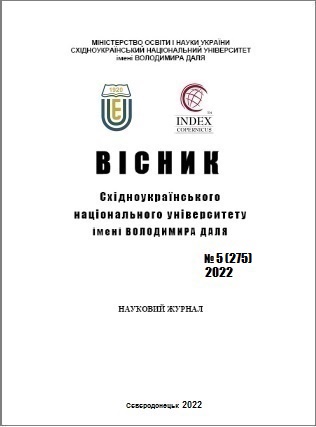Methods of studying high-tech disciplines
DOI:
https://doi.org/10.33216/1998-7927-2022-275-5-40-43Keywords:
design, technical task, mathematical model, methods, modeling, cognitive processAbstract
The article deals with the issues and problems of teaching students encountered in the study of high-tech disciplines. Higher education institutions (HEIs) in modern conditions require a new approach to the training of students of different levels of education - a qualitative, technological approach. Increased demands are placed on the training of specialists in the field of knowledge «Automation and nstrumentation». Considering traditional education, there are challenges in realising these requirements. The introduction of high-tech disciplines into teaching allows a variety of individual task options to be quickly developed and offered to students on a large number of topics, taking into account the level of initial computer proficiency of the students. With the right approach, CAD can serve as an excellent basis for introducing project-based learning into the educational process. It consists of the teacher setting the baseline data and formulating the intended outcomes of the learning task. The students themselves outline intermediate tasks, look for solutions and, when completing the project, compare the results with those required and adjust the parameters to be adjusted if necessary. As a result, they acquire the skills to independently «extract» new knowledge, learn to apply it to solving practical problems, and get the first experience of research work. But on the way to solving this problem, higher education institutions today face a number of serious difficulties associated with an insufficient material base (lack of powerful computers, high cost of licensed software, etc.). It is true that a number of large CAD companies offer (free of charge) «'stripped-down» student versions of CAD, which can be of considerable help in learning. In its turn, studying modern CAD and acquiring skills in working with it will undoubtedly contribute to the quality of engineering training, significantly reduce the time required for a young specialist to adapt to the workplace after graduation from a higher education institution, and significantly increase his/her employers' demand for him/her. In addition, the use of automated design systems in the educational process along with the solution of the main task gives a number of additional educational effects. The cumulative effect of such effects repeatedly improves learning results. In this article, some distinguishing features of CAD are considered, which have a positive effect on the effectiveness of the training of a modern specialist.
References
1. Стандарт вищої освіти України: другий (магістерський) рівень, галузь знань 15 Автоматизація та приладобудування151 Автоматизація та комп’ютерно-інтегровані технології. 2020 р.
2. Саєнко С. Ю., Нечипоренко І. В. Основи САПР : навч. посібник / Харків : ХДУХТ, 2017. 120 с.
3. Малюх В. Н. Введение в современные САПР : Курс лекций. / М.: ДМК Пресс, 2010. 192 с.
4. Карпюк Л. В., Гуліда М. І., Ревенко С. А. Комп’ютерна графіка в машинобудівних кресленнях : Навч. посібник. Луганськ: Вид-во Східноукраїнського національного університету імені Володимира Даля, 2007. 132 с.

